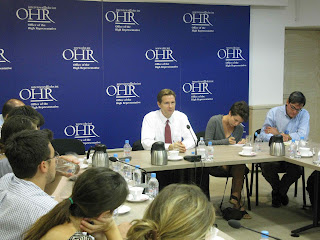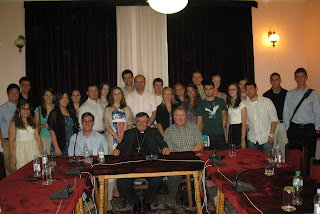CANVAS day 3 - thanks to Milan and Sandra

Milan and Sandra, our trainers for the past 3 days are pictured below. Milan is to my right (your left) and Sandra is right next to him. Mladen, Elise, Tori, Will, Marie and Demi joined us all on the roof deck of our beautiful Hotel Prag, which also served as our conference room. We wrapped up today with lessons on: developing "the message" (for your campaign, movement, group) "Recruit-Train-Act" (recruiting techniques to grow your organization) perception analysis (what do we say about us? what do we say about 'them'? What do THEY say about us? and What do THEY say about themselves?) - all designed to create your message and to counter "their" attacks on our credibility strategic planning and action implementation - developing goals and objectives, and making them happen In keeping with the confidentiality of CANVAS, I am not about to divulge any of the action plans developed here in Belgrade! If any of these happen in Boston or










